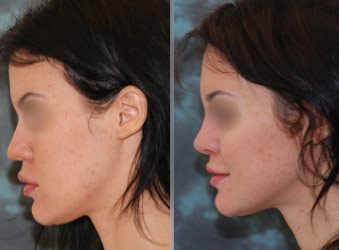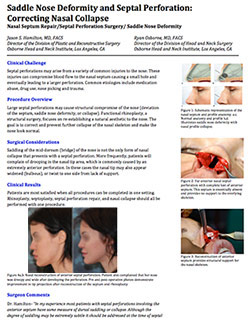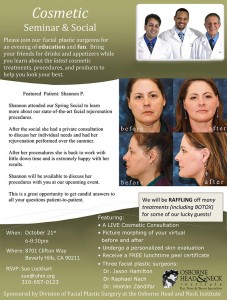- Hereditary Hemorrhagic Telangiectasia - May 25, 2016
- Hereditary Hemorrhagic Telangiectasia: Septal Perforation and Nose Bleeds - May 23, 2016
- Hereditary Hemorrhagic Telangiectasia: Epistaxis and Septal Perforation - May 18, 2016
- Wegener’s Granulomatosis: Autoimmune Disease and Multi-Focal Septal Perforation - May 9, 2016
- Kyle Korver: Facial Injury and Nasal Fracture - March 24, 2015
- Russell Westbrook: Facial Injury and Surgery - March 5, 2015
- Mega-perforation: Pushing the Limits of Septal Perforation Repair - November 26, 2014
- Septoplasty Complication and Septal Perforation - November 24, 2014
- Nose Picking (Rhinotillexis) and Septal Perforations: Why I should stop picking my nose…? - November 24, 2014
- Nasal Fractures, Septal Hematoma, and Septal Perforation: Simultaneous Rhinoplasty and Septal Perforation Repair - October 1, 2014
Nasal Septum Repair/Septal Perforation Surgery/ Saddle Nose Deformity
| Jason S. Hamilton, MD, FACS Director of the Division of Plastic and Reconstructive Surgery Osborne Head and Neck Institute, Los Angeles, CA |
Ryan Osborne, MD, FACS Director of the Division of Head and Neck Surgery Osborne Head and Neck Institute, Los Angeles, CA |
 CLINICAL CHALLENGE
CLINICAL CHALLENGE
Septal perforations may arise from a variety of common injuries to the nose. These injuries can compromise blood flow to the nasal septum causing a small hole and eventually leading to a larger perforation. Common etiologies include medication abuse, drug use, nose picking and trauma.
PROCEDURE OVERVIEW
Large septal perforations may cause structural compromise of the nose (deviation of the septum, saddle nose deformity, or collapse). Functional rhinoplasty, a structural surgery, focuses on re-establishing a natural aesthetic to the nose. The goal is to correct and prevent further collapse of the nasal skeleton and make the nose look normal.
SURGICAL CONSIDERATIONS
Saddling of the mid-dorsum (bridge) of the nose is not the only form of nasal collapse that presents with a septal perforation. More frequently, patients will complain of drooping in the nasal tip area, which is commonly caused by an extremely anterior perforation. In these cases the nasal tip may also appear widened (bulbous), or twist to one side from lack of support.
CLINICAL RESULTS
Patients are most satisfied when all procedures can be completed in one setting. Rhinoplasty, septoplasty, septal perforation repair, and nasal collapse should all be performed with one procedure.

SURGEON COMMENTS
Dr. Hamilton- “In my experience most patients with septal perforations involving the anterior septum have some measure of dorsal saddling or collapse. Although the degree of saddling may be extremely subtle it should be addressed at the time of septal perforation repair to achieve the best long term results. Many patients with nasal collapse from septal perforation have been offered a rhinoplasty alone and told that this will stabilize the nose and the septal perforation can be ignored or not treated at all. The concept of peforming a rhinoplasty and ignoring a septal perforation is bad medicine. A functional medical problem should never be overlooked in an effort to perform a cosmetic procedure(rhinoplasty). Delaying the septal perforation surgery until after a rhinoplasty is also poor planning as the rhinoplasty will need to be deconstructed in order to repair the septal perforation. This also unnecessarily puts the patient at increased risk from anesthesia from two separate surgeries. My standard plan is correct everything (all problems) with one surgery.”
Dr. Jason Hamilton is the Director of Plastic and Reconstructive Surgery for the Osborne Head and Neck Institute, and is double board certified by the American Board of Facial Plastic and Reconstructive Surgery and the American Board of Otolaryngology/Head and Neck Surgery. Dr. Hamilton is one of only handful of septal perforation specialist worldwide
For more information on the deviated septum, septoplasty, functional rhinoplasty and septal perforation repair by Dr. Jason Hamilton, septal perforation specialist, please contact the Osborne Head and Neck Institute or visit www.perforatedseptum.com.
Click here to download article PDF




